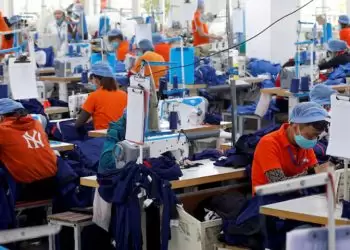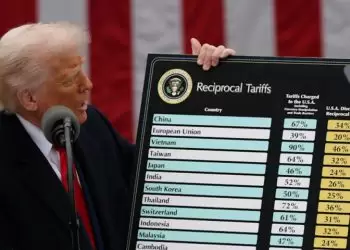AKTUN TUYUL CAVE SYSTEM, Mexico (news agencies) — Rays of sunlight slice through pools of crystal water as clusters of fish cast shadows on the limestone below. Arching over the emerald basin are walls of stalactites dripping down the cavern ceiling, which opens to a dense jungle.
These glowing sinkhole lakes — known as cenotes — are a part of one of Mexico’s natural wonders: A fragile system of an estimated 10,000 subterranean caverns, rivers and lakes that wind almost surreptitiously beneath Mexico’s southern Yucatan peninsula.
Now, construction of President Andrés Manuel López Obrador’s crown jewel project — the Maya Train — is rapidly destroying part of that hidden underground world, already under threat by development and mass tourism. As the caverns are thrust into the spotlight in the lead-up to the country’s presidential elections, scientists and environmentalists warn that the train will mean long-term environmental ruin.
Deep in the jungle, the roar of heavy machinery cuts through the cave’s gentle “drip, drip, drip.” Just a few meters above, construction of the train line is in full swing. The caverns rumble as government workers use massive metal drills that bore into limestone, embedding an estimated 15,000 steel pillars into the caverns.
Engineer Guillermo D. Christy looks upon the once immaculate cave, now coated with a layer of concrete and broken stalactites, icicle-shaped rock formations normally hanging from the roof of the cave. A mix of grief and anger is painted upon the face of D. Christy, who has long studied the waters running through the caves.
“Pouring concrete into a cavern, directly into the aquifer, without any concern or care,” D. Christy said. “That’s total ecocide.”
For nearly a thousand miles, (1,460 kilometers) the high-speed Maya Train will wind its way around Mexico’s southern Yucatan Peninsula. When it’s completed, it’ll connect tourist hubs like Cancun and Playa del Carmen to dense jungle, remote communities and archaeological sites, drawing development and money into long-neglected rural swathes of the country.
The more than $30 billion train is among the keystone projects of Mexico’s outgoing President López Obrador, who has spent his six years in office portraying himself as a champion of the country’s long-forgotten poor.
“The Maya Train will be our legacy of development for the southeast of Mexico,” the president wrote in a post on the social platform X last year.
With elections on Sunday, the future of the train, and López Obrador’s legacy, is uncertain. Both leading candidates to replace him have made promises for a green agenda, but also supported the economic promises the train brings.
At issue is the path the train takes.
It was originally planned to run along the region’s highway in more urban areas. But after waves of complaints by hotel owners, the government moved one of the final sections of the line deeper into the jungle, atop the most important cave system in the country. It’s plowed down millions of trees, a chunk of the largest tropical forest in the Americas after the Amazon.
The caves contain one of the biggest aquifers in Mexico and act as the region’s main water source, crucial at a time when the nation faces a deepening water crisis. In 2022, archaeologists also discovered some of the oldest human remains in North America within the caverns.
The area was once a reef nestled beneath the Caribbean Sea, but changing sea levels pushed Mexico’s southern peninsula out of the ocean as a mass of limestone. Water sculpted the porous stone into caves over millions of years.
It produced the open-face freshwater caverns, “cenotes,” and underground rivers that are in equal parts awe-inspiring and delicate, explained Emiliano Monroy-Ríos, a geologist at Northwestern University studying the region.
“These ecosystems are very, very fragile,” Monroy-Ríos said. “They are building upon a land that is like Gruyere cheese, full of caves and cavities of different sizes and at different depths.”
López Obrador promised his government would prevent damage to the Great Mayan Aquifer by elevating the sections of the train on thousands of hefty steel pillars buried deep into the ground.
But the populist leader was met with an uproar in late January when environmentalists and scientists posted videos showing government drills carving tunnels into the tops of caverns, implanting rows of 6-foot-wide (2-meter-wide) steel pillars.
López Obrador responded angrily to the videos, calling them “staged” by his political enemies.
“These pseudo-environmentalists are liars,” López Obrador said in a news briefing. “Don’t watch those videos because they’re specialists in staging.”









